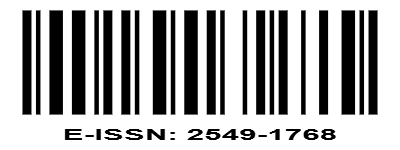ETHNOBOTANICAL STUDY OF PLANTS USED FOR HAIR CARE BY GAYO WOMENS IN BENER MERIAH
DOI:
https://doi.org/10.22373/biotik.v11i2.19938Keywords:
Etnobotany, Gayo, Hair CareAbstract
Gayo women in Bener Meriah Regency are one of the communities that still maintain the use of plants as cosmetics, one of which is used as hair care. Each ethnic group has its own way of using plants according to local wisdom, but it’s knowledge is only passed down orally from generation to generation without any written documentation. This research aims to find out about the species of plants used as hair care by Gayo women in Bener Meriah. This research uses an exploratory survey method. Sample determination was carried out using snaw ball sampling. The sample includes housewives and youth from the Gayo tribe, as well as people who use plants as hair care. The data was analyzed descriptively qualitatively and the data was displayed in the form of tables and figures. The results of the research show that there are 11 plant species used in Gayo women's hair care.Downloads
References
Anak A.K. Darmadi. Etnobotani, Ragam Etnobotani di Bali. Bali: Udayana University Press. 2017
Nasir, Tamalene, M. et al. Study of ethnobotany of medicinal plant of Tobelo Dalam (Togutiethnic group of Halmahera Island Indonesia. Jurnal Medicinal Plant. 2016; 8 (2), 127-136. doi : 10.5958/0975-6892.2016.00016.2
Anisatu Z. Wakhidah, Tatik Chikmawati, & Y. Purwanto. Homegarden Ethnobotany of Two Saibatin Villages in Lampung, Indonesia: Species Diversity, Uses, and Values. Forest and Society. 2020; 4(2): 338-357. http://dx.doi.org/10.24259/fs.v4i2.9720
Isna Rasdianah Aziz, et al. Ethnobotany of traditional wedding: a comparison of plants used by Bugis, Palembang, Sundanese and Karo ethnic in Indonesia. Journal of Physics: Conference Series. 2019; 1-6. doi:10.1088/17426596/1175/1/012005
Ziraluo, Y. P. B. Tanaman Obat Keluarga dalam Perspektif Masyarakat Transisi (Studi Etnografis pada Masyarakat Desa Bawodobara). Jurnal Inovasi Penelitian. 2020; 1(2), 99–106. https://doi.org/10.47492/jip.v1i2.55.
Widodo, H., Rohman, A., & Sismindari, S. Pemanfaatan Tumbuhan Famili Fabaceae untuk Pengobatan Penyakit Liver oleh Pengobat Tradisional Berbagai Etnis di Indonesia. Media Penelitian dan Pengembangan Kesehatan. 2019; 29 (1), 65–88. https://doi.org/10.22435/mpk.v29i1.538
Rizki dan Leilani, I. Etnofarmakologi Tumbuhan Familia Rhizophoraceae oleh Masyarakat di Indonesia. Jurnal BioCONCETTA. 2019; 1 (3), 51-60.
Syavira Marwa, Raisya Hasina dan anggit l. Sunarwidhi. Studi Etnobotani Bahan Kosmetik Asli Masyarakat Desa tanjung luar kabupaten lombok timur, indonesia. Jurnal Sosains. 2022; 2(1).77-88. http://sosains.greenvest.co.id.
Cleber Barros and Rosana Bevenuto Guilhen Barros. Natural and Organic Cosmetics: Definition and Concepts. J Cosmo Trichol, 2020; 6 (2): 1-9. DOI: 10.4172/2471-9323.1000143
Yosef P.N Murago. Potensi Kosmetik Natural Indonesia dan Persyaratan Berkelanjutan sebagai Referensi Pasar di Uni Eropa. KBRI Brussel. 2021.
Made. D. A. Rambut Indah dan Cantik dengan Kosmetika Tradisional. JPTK, UNDIKSHA. 2012; 9 (1), 25 – 36
Sukiman. Nilai-nilai Pembangunan Islam dalam Masyarakat Gayo. MIQOT. 2014; XXXVIII (1): 215-237.
Nasir, Tamalene, M. et al. Study of ethnobotany of medicinal plant of Tobelo Dalam (Togutiethnic group of Halmahera Island Indonesia. Jurnal Medicinal Plant. 2016; 8 (2), 127-136. doi : 10.5958/0975-6892.2016.00016.2
Marina S. Review Article Eclipta prostrata (L.) L. (uses and bioactivities). GSC Biological and Pharmaceutical Sciences, 2022; 18(01), 001–007. https://doi.org/10.30574/gscbps.2022.18.1.0371
Asri B. Yulianti dan Ferry F. Sofian. Review artikel :Aktivitas Farmakologi Ekstrak Urang-aring (Eclipta alba L.). Farmaka ; 15 (2). 178-185.
Pavan et al. Formulation and Evaluation of herbal hair oil. International Journal of Pharmaceutical Research and Applications, 2021; 6 (5), 1285-1299.
Bakht J, Islam A, Shafi M. Antimicrobial potentials of Eclipta Alba By Well DiffusionMethod. Pak. J. Bot. 2011; 43: 169-174.
Billi A. dkk. Uji Efektifitas Ekstrak Tumbuhan Urang Aring (eclipta alba (l.) Hassk) terhadap Pertumbuhan Jamur Colletotrichum sp. Penyebab penyakit antraknosa. urnal Biologi Eksperimen dan Keanekaragaman Hayati. 2018; 5(1). 49-56.
Ernilasari, Yuslinaini, Saudah. Etnopharmacology Of Spices As Traditional Medicine In Aceh Rural Communities Central Aceh. BIOTIK. 2022; 10 (2), 151-161.
Sharma, S. (2008). The secret benefits ofaroma therapy: Secret guides. New Delhi: Sterling Paperbacks.
Kristina L Silalahi, Fajar A. Ariga, Patimah S Siregar. Pengaruh Aromaterapi Kenanga (Cananga Odorata) Terhadap Penurunan Tekanan Darah Pada Pasien Hipertensi. Jurnal Keperawatan Priority. 2020; 3(2). 101-108
Downloads
Published
Issue
Section
License
Copyright (c) 2023 Ernilasari Ernilasari, Saudah Saudah, Rubiah Rubiah

This work is licensed under a Creative Commons Attribution-ShareAlike 4.0 International License.
Authors who publish with BIOTIK: Jurnal Ilmiah Biologi Teknologi dan Kependidikan agree to the following terms:
- Authors retain copyright and grant the journal right of first publication with the work simultaneously licensed under a Creative Commons Attribution License that allows others to share the work with an acknowledgement of the work's authorship and initial publication in this journal.
- Authors are able to enter into separate, additional contractual arrangements for the non-exclusive distribution of the journal's published version of the work (e.g., post it to an institutional repository or publish it in a book), with an acknowledgement of its initial publication in this journal.
- Authors are permitted and encouraged to post their work online (e.g., in institutional repositories or on their website) prior to and during the submission process, as it can lead to productive exchanges, as well as earlier and greater citation of published work.











